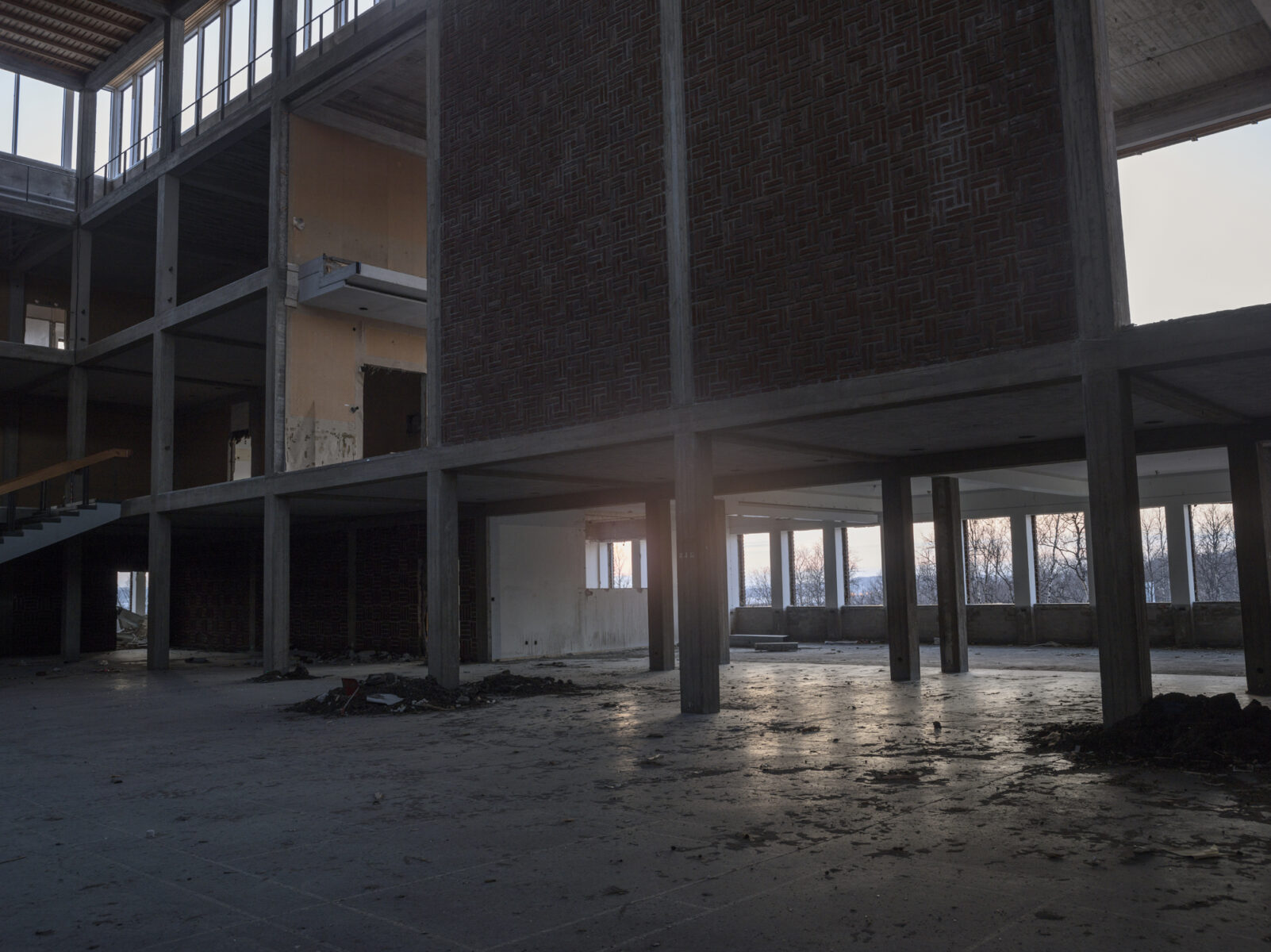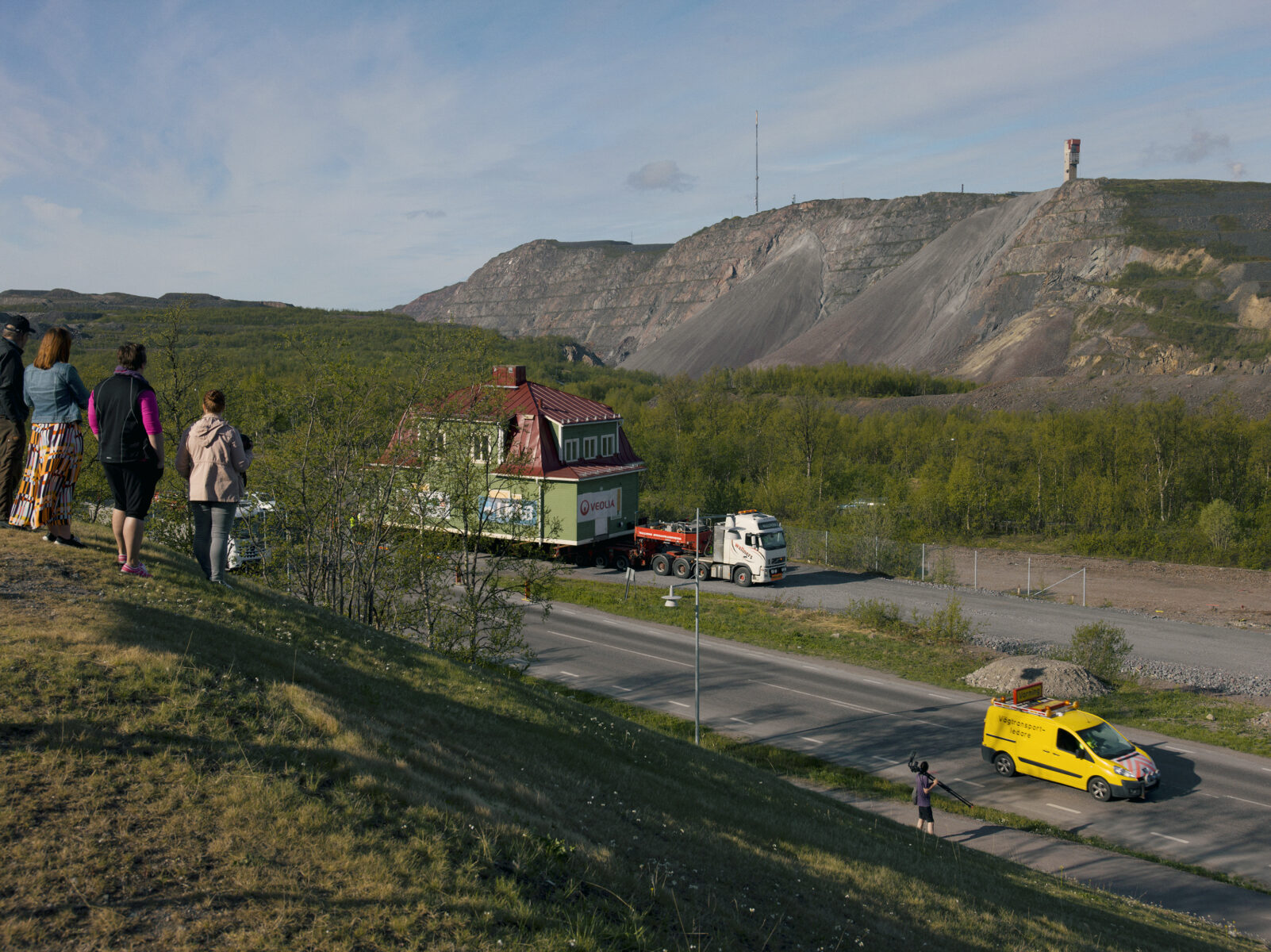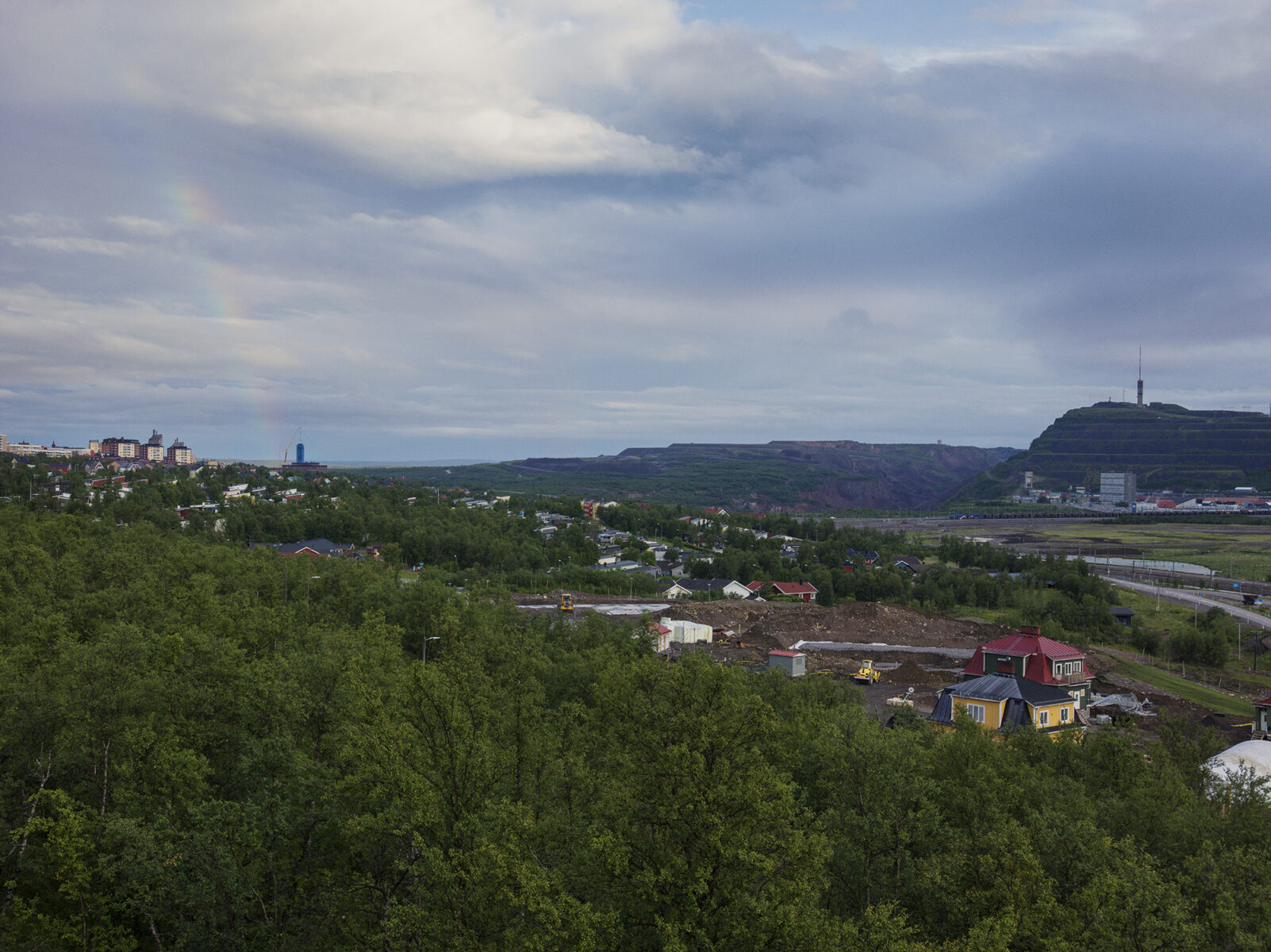Kiruna
Kiruna, a city in the northernmost part of Sweden, is experiencing one of the biggest urban transformation projects in recent history. The city is being relocated by four kilometers due to the expansion of the mine around which Kiruna was built. A third of the population must relocate, housing blocks and landmark buildings are being demolished or moved, and a new city is taking shape. But how do you move a city?
Since 2013, Klaus Thymann has created an ongoing body of photographic work putting the relocation of Kiruna into a historical and geographical context. The works have been shown in museums and shows, and the project has been featured by The Atlantic, Dezeen, CNN, Vice, Bloomberg and more. One significant show was Kiruna Forever, an exhibition produced by ArkDes the Swedish Centre for Architecture and Design. The works were show in a parallel exhibition at Konstmuseet i Norr, Norrbotten’s new County Art Museum, located in Kiruna. Thymann was specially commissioned for the exhibition and shown show simultaneously at both venues. One his images was on the exhibition book cover and others were featured in spreads inside. The book was edited by Daniel Golling and Carlos Mínguez Carrasco with graphic design by Magdalena Czarnecki and featured both Swedish and English language.
The work reflects on the big questions that such a complex project raises. What is the limitation of natural resources? What happens to residents’ identity and security when their homes are demolished? How do we decide whether cultural heritage should be preserved or sacrificed? How does the relocation affect the lives of the Indigenous population, the Sámi? How permanent are the cities we live in?















